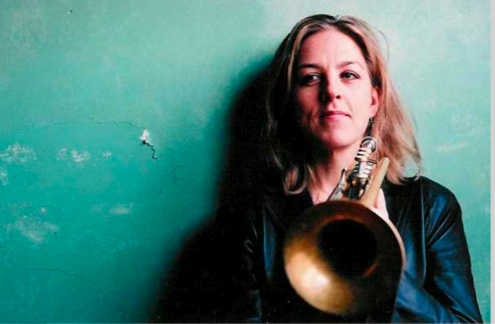The recent J@LC presentation of John Zorn’s Masada and the Cecil Taylor Trio has stirred up some thinkers…not to mention John Schaefer.
Dig Darcy James Argue and Taylor Ho Bynum‘s thoughts on the subject.
All of this thought eventually led DJA to write this:
While I’m obviously all for the proliferation of independent, artist-owned, do-it-yourself labels and young musicians trying to pull off ambitious projects even in the absence of institutional support, the problem is (as I have said elsewhere) if everyone’s just doing their own thing, how does a collective scene emerge from that? How do we get people excited about the vanguard of independent, creative, contemporary jazz as a movement, instead of just gravitating towards the handful of stars who somehow emerge to wider acclaim?
DJA is concerned with scene development. I am more concerned with how we are to find our audiences. I think they are similar, if not the same issue. Scenes are a way to find music that we like. I like Ken Vandermark. Jeb Bishop was in his band, I’ll probably dig Jeb. I know Jeb plays with Keefe Jackson, maybe I should check out his stuff, etc. (Ok, that is a made up example, I actually have the pleasure of working with Jeb and Keefe, so maybe that was a blantant name/link drop.) Another example might be the scene that is happening around Barbes in Brooklyn right now. There are things I will check out because of their proximity to other things I like.
Again DJA asks:
“How do we get people excited about the vanguard of independent, creative, contemporary jazz as a movement, instead of just gravitating towards the handful of stars who somehow emerge to wider acclaim?”
While many of us as artists have found our way out of the old major label model of making and distributing music, most of us as listeners have not found our way to a new model of finding good music. In the old days we knew about what we read about in music magazines or newspapers, what we heard on the radio, and we saw in the record store. Record stores barely exist now, and won’t exsist as we know them in the new system. Radio and magazines are still stuck in the old mind set. They play/write about whatever they are told to by the labels. There is a perceived legitimacy that comes from being on a label, and media outlets still depend on this perception to make decisions of taste and quality for them. This is an issue for indie DIY artists, but only if that is still our method of reaching our audiences.
When I released “One”, I did limited runs of the CD. I think I made 200 in the first run. This was purely a financial decision. It meant I could pay the band more, because I had to come up with less for the manufacturing. This meant that the discs were burned instead of pressed. Other wise the rest of the package was the same. The method of putting the 1’s and 0’s onto the disc still carries a stigma. Cadence put their review of the disc in a special ghetto called “CD Ring” that is reserved for CD-R releases. This isn’t a knock on Cadence, just an indicator of their mindset on the indie issue, and they are one of the more progressive publications out there. No one else even reviewed it. Did they listen to it and decide not to write about it, or did they look at it and make that decision? I don’t know…
What if I decide to do a free download Creative Commons licensed album? Will I be able to get it written about in DownBeat or JazzTimes? Will it be viewed as less legitimate because I am not charging for it? Will people listen to it and write about it based solely on the musical content?
I think the music blogs that are hosting these conversations are part of the answer. Individual artists and listeners can help us find new music and new scenes. Those of us that teach need to make sure that we turn our students on to The Bad Plus and Steve Coleman, as well as Trane and Bird. We have to expose the now as much as the then. As performers we need to be willing to explore new venues and ways of presenting ourselves.
Most importantly, we need to support each other and create our scenes by talking about the music we like, and telling anyone who will listen about the killer new homemade indie disc we just picked up.
It would be great if J@LC had a New Improvisers Series every Thursday, and DownBeat had dedicated space for indie/DIY CD reviews, but we better not hold our breath. We probably just need to find the new way to make it work.





